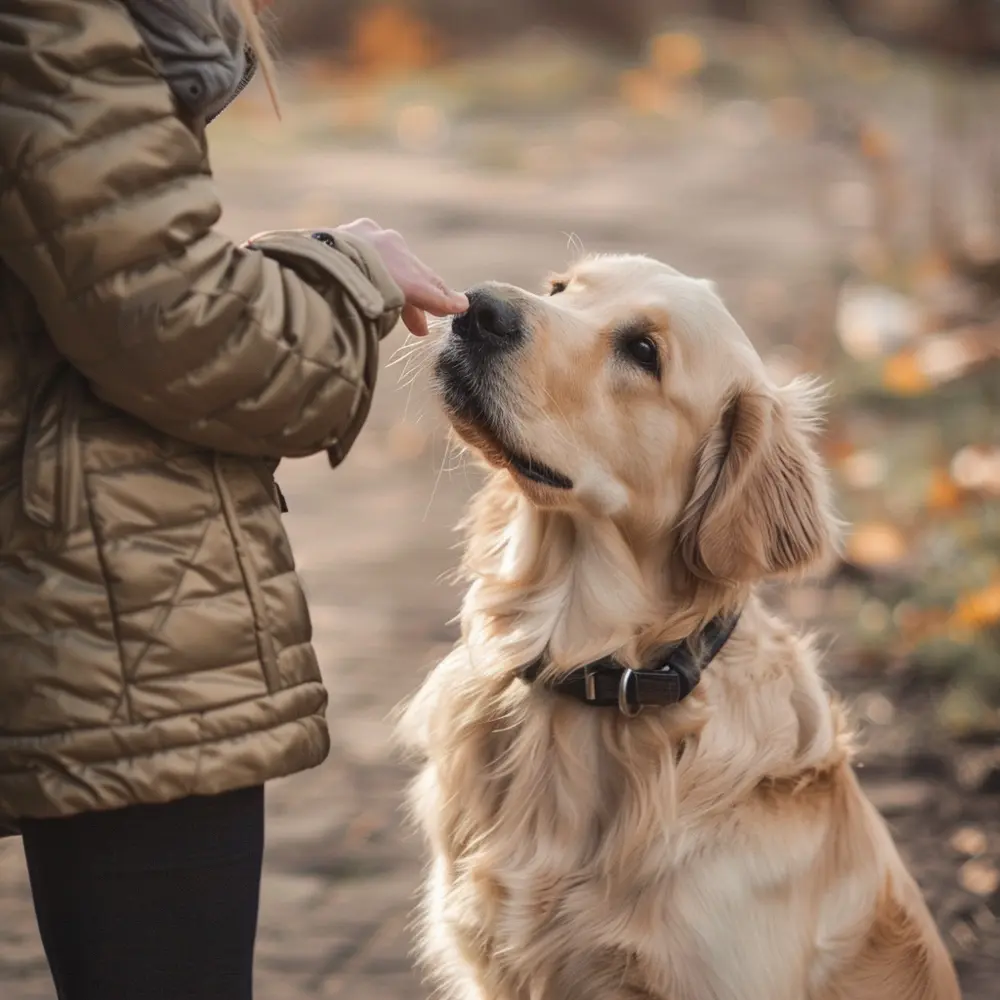Table of Contents:
Understanding Marker Signals in Dog Training
At the heart of dog training lies the ability to communicate effectively, and marker signals can serve as one of the fundamental tools to achieve just that. But what exactly are these signals? Marker signals are unique sounds or actions used by people to signal to their dogs the exact moment they perform a desired behaviour. Think of them as a 'snapshot' within the flow of actions that captures the right move.
In essence, marker signals are about timing and precision. They pinpoint the behaviour at the exact time it happens, making it clear to your dog what they did right. These signals can be anything from a simple word such as "yes" or "good," to a click sound made using a small hand-held device known as a clicker. Even a flash of a light could work for dogs that may have hearing troubles.
The power of these signals lies in their consistency and the instant feedback they provide. By marking the desired action as it occurs and following it swiftly with a reward, the dog starts to link the behaviour with positive outcomes. Over time, this forms a strong association, and the marked behaviour becomes more frequent.
The Role of Marker Signals in Effective Communication with Your Dog
Delving into the dynamics of canine communication, it's important to recognize the nuanced role that marker signals play. These tools are more than just training aids; they can act as a linguistic bridge between species. When we use a marker signal, we’re sending a clear and unambiguous message that transcends our normal language limitations.
Effective communication between humans and dogs hinges on understanding and being understood. Dogs, like humans, benefit from feedback that is direct and immediate. In the context of training, the power of marker signals unfolds as they provide instant feedback, cutting through potential confusion and reinforcing desired actions with speed and clarity. This immediacy is what aligns them so closely with effective communication.
Conditioning Your Dog to Respond to Marker Signals
To forge a strong link between marker signals and desirable behaviours, it is crucial to condition your dog. This process is akin to charging a battery; it needs to be powered up before it can be used. Conditioning ensures that your dog not only hears the marker but also connects it with positive reinforcement.
Begin by choosing a specific marker signal, be it a word, click, or gesture. Next, in a distraction-free environment, introduce the marker. The moment your dog hears or sees it, reward them promptly with a treat. The goal is to create a reflexive association in the dog's mind between the signal and the reward.
Repetition is key in this phase. The more consistently you pair the marker with a reward, the stronger the association becomes. Patience is your ally here; take your time to cement this learning. Once your dog starts to show signs of expectation upon hearing or seeing the marker, you know the conditioning is taking hold.
A well-conditioned marker becomes a powerful cue in your training toolkit. It signals to your dog that the action they performed is exactly what you’re looking for, and that a reward is on its way. This understanding propels their learning journey forward, making training sessions both more productive and enjoyable.
The Benefits of Using Marker Signals in Training
Integrating marker signals into your training regime can yield a multitude of benefits, enhancing the overall learning experience for both you and your dog. One of the primary advantages is the enhanced speed at which dogs can learn. This framework allows them to quickly decipher exactly which behaviour is being rewarded, thus encouraging them to repeat it more consistently.
Another significant benefit is the reduction in stress for both parties. Without the guesswork, training sessions become smoother and more straightforward. This clear line of communication helps to avoid frustration, often resulting from misunderstood commands or expectations.
Furthermore, marker signals enable the development of complex behaviours through a process known as shaping. By marking incremental steps towards a final goal, dogs can be guided through more sophisticated tasks that would be difficult to teach through traditional means.
Adaptability is yet another benefit. Marker signals can be employed in various environments and situations. Whether in a noisy park or a quiet home, the consistency of the marker remains the same. This flexibility ensures that training doesn't have to be confined to a single set of circumstances.
In summary, employing marker signals offers a clear path to effective training. The consistency, precision, and adaptability they provide is unmatched, making them an invaluable asset for trainers seeking to foster an environment of positive reinforcement and swift learning.
Verbal Cues vs. Clickers: Choosing the Right Marker Signals
When selecting the optimal marker signals for training, the debate often falls between verbal cues and clickers. Each has its own merits, so it’s vital to consider which will best suit your individual dog and your training environment.
Verbal cues, like "yes", "good" or a click with your tongue offer the convenience of being readily available – your voice is always with you. However, consistency in tone and volume can be challenging to maintain, especially in variable settings.
Clickers, on the other hand, deliver a distinct and consistent sound that is not easily drowned out by environmental noise. This can be incredibly useful in busy or distracting settings. Yet, they require you to have the clicker on hand, which could be a downside if you prefer to train without the need for extra tools.
The choice between verbal cues and clickers may also hinge on the dog's individual response. Some dogs may respond better to the sharp sound of a clicker, while others may find a verbal signal more compelling. It is worthwhile to experiment with both types of marker signals to discern which elicits the best response from your dog.
Ultimately, the decision should pivot on efficiency in communication and ease of use within the context of your training sessions. Both verbal cues and clickers have proven effective, but the right choice is the one that aligns with your training goals and complements the learning style of your dog.
Addressing Criticisms: The Relationship-Enhancing Power of Marker Signals
While marker signals are widely celebrated for their efficacy, there are some criticisms that suggest they may impede the natural flow of communication between a handler and their dog. A closer examination, however, reveals that the application of marker signals can actually strengthen the bond shared by a canine and their trainer.
Rather than create a robotic or impersonal training experience, the judicious use of marker signals can improve the relationship by building a language of trust and understanding. When dogs learn that their actions can lead to clear and positive feedback, it nurtures an environment of security where learning can thrive.
In essence, rather than detracting from the training experience, marker signals can magnify the connection between dogs and their humans, fostering a partnership founded on clear communication and mutual success.
Conclusion: Strengthening Bonds with Marker Signal Training
In conclusion, the strategic use of marker signals in dog training extends far beyond mere training protocols. It encapsulates a holistic approach that considers the emotional and psychological well-being of the dog and can facilitate a deeper connection with their human companion. The consistent and precise application of these signals lays a foundation of trust and understanding, crucial for strengthening the bonds of companionship.
The power of marker signals is evident in the confident, engaged, and responsive dogs they help shape. So consider having a marker signal as part of your dog training toolbox!
FAQ on Enhancing Canine Training with Marker Signals
What are marker signals in dog training?
Marker signals are distinct sounds or gestures used by trainers to indicate the exact moment a dog performs the correct behaviour. They act as a communication bridge, letting the dog know a reward is forthcoming.
Why are marker signals effective in dog training?
Marker signals are effective because they provide immediate and precise feedback to the dog, helping them understand exactly what action is being rewarded, and this promotes quick and clear learning.
How do you condition a dog to respond to marker signals?
Conditioning a dog to marker signals involves consistently pairing the marker with a reward, so that the dog forms a strong association between the signal and receiving a positive reinforcement.
What are the benefits of using verbal cues over clickers?
Verbal cues are always available as they do not require any extra tool like a clicker. They can also convey emotional tone, which helps strengthen the bond with the dog.
How can marker signals enhance the relationship with your dog?
Marker signals can enhance the relationship with your dog by providing clear communication, reducing frustration, and building trust as the dog learns that certain behaviours will lead to positive outcomes.








